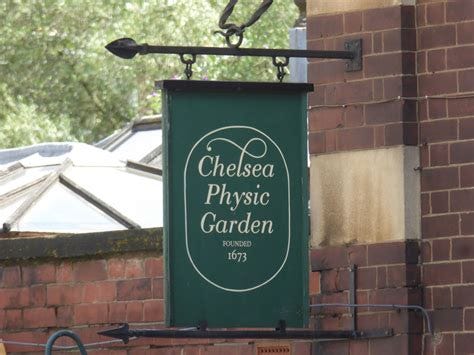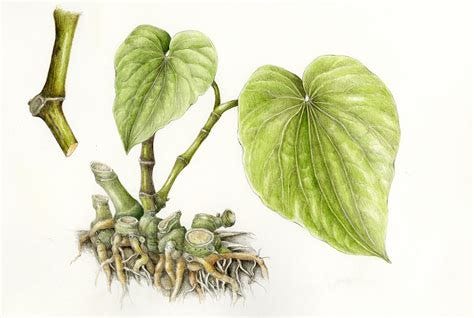Kava: From Apothecary Jars to Gas Stations
Brought to Europe by Captain Cook in 1768, this ancient root once studied at Chelsea Garden is back — unregulated and sold in gas stations.
Kava. Today you’ll see it in a gas station, sold in flashy cans under names like Feel Free, often mixed with Kratom. No proof of age, no pharmacist, no warning label. Parents are concerned about it, and they should. Because a teenager could buy it this afternoon, not realizing the risks: liver damage, dependency, even permanent injury.
But Kava isn’t new. Far from it. This root has been prized, traded, and prescribed for centuries. It’s the story of today’s drugs, the old trade routes, Captain Cook’s voyages, and the apothecaries who lined their shelves with jars of roots and leaves.
From Gardens to Jars
I’m writing from the Chelsea Physic Garden in London, founded in 1673 by the Worshipful Society of Apothecaries. This is one of the oldest medicinal gardens in the world — a place where plants were grown, studied, and taught as medicine. And one of my favorite places to visit in all of London.
For most of history, the apothecary was the doctor. Herbalists became apothecaries, and apothecaries became the forerunners of modern pharmacists. Chelsea’s garden supplied the materia medica — the roots, seeds, and dried leaves that filled apothecary jars across Europe and America.
It was here that Kava — Piper methysticum — took its place as one of those curiosities worth studying.
The Piper Family
Kava is part of the same plant family as black pepper (Piper nigrum). Pepper was once so valuable that Attila the Hun demanded it as ransom when he besieged Rome. Landlords accepted “peppercorn rent.” Venice grew wealthy by monopolizing the pepper trade.
And while pepper fueled caravans and empires, Kava held cultural power in the Pacific. It was the drink of ceremony and community, calming the mind and loosening social boundaries.
Captain Cook and the “Intoxicating Pepper”
In 1768, Captain James Cook set out on his first voyage to the Pacific. His botanists, Joseph Banks and Daniel Solander, observed Kava in use and recorded its effects. Solander named it Piper methysticum — the “intoxicating pepper.” Cook’s artist, Sydney Parkinson, sketched the plant, and specimens made their way back to Europe.
Botanists as part of the crew on these ships were commonplace. Trying to find better treatments for disease was just part of the age of discovery.
From Polynesian rituals to the Chelsea Garden, Kava entered the apothecary tradition.
Apothecary Uses
Apothecaries experimented widely. Kava, they noted, had different effects depending on the dose:
Small doses calmed the mind, but heightened alertness.
Larger doses produced intoxication, euphoria, and the peculiar numbing of the mouth.
It was regarded as an aphrodisiac.
Prescribed for anxiety and chronic pain.
Used as a urinary antiseptic, especially for cystitis and urinary tract infections.
And because it could be cultivated in the UK, Kava almost certainly traveled across the Atlantic, becoming one more jar in the apothecaries of early America.
There wasn’t much medicine in those early days of America. The herbalist had become the apothecary, and those were the forerunners of both pharmacists and internal medicine doctors today. When they came to America, they brought their favorite cures, and then continued to import them.
The Sears Myth
There’s a story that by 1900 you could order Kava from the Sears catalog as a “temperance wine.” It’s a great tale — but so far, no one has shown the actual catalog page. I’d love to see proof.
So here’s my offer: if you find evidence in a Sears catalog, send it my way. We’ll send you swag from my collection.
Kava in Today’s America
Fast forward to now: Kava has re-emerged, but not in jars or rituals now conveniently available in cans. No pharmacist to tell you the danger, and no written danger on the bottle. And here’s what you need to know.
In the United States, kava is sold mainly as a dietary supplement and is not approved by the FDA as a drug. Manufacturers are responsible for ensuring product safety and proper labeling, while consumers are advised to consult healthcare professionals before using Kava supplements [1].
In 2002, the U.S. The Food and Drug Administration warned that kava-containing dietary supplements promoted for relaxation and other purposes could cause rare but severe liver injuries - including hepatitis, cirrhosis and liver failure. They advised consumers, especially those with liver issues or taking liver-impacting drugs, to consult a doctor before use and report any adverse effects [2].
And in 2020, the FDA concluded that kava is not generally recognized as safe (GRAS) for use in conventional foods due to evidence of toxicity, potential liver damage, possible carcinogenicity, drug interactions, and a lack of sufficient safety data [3].
That hasn’t stopped companies from selling it. And because supplements are so loosely regulated, the burden falls on consumers — and too often, on their livers.
A Warning in the Garden
Chelsea Garden teaches us two lessons. First, that modern medicine began here, in the careful study of plants. But second, that not all plants do all things for all people. The apothecaries had jars of remedies — some lifesaving, some useless, some deadly.
Today, our pharmacies still sell rows of supplements and powders without real regulation, promising natural cures. Kava is a reminder: natural doesn’t mean safe.
The Takeaway
Kava’s story stretches from Polynesian rituals, to Captain Cook’s journals, to the apothecary jars of Chelsea, to the aisles of your local gas station.
Every remedy has roots. And every root has a story.
Endnotes
[1] NIH Office of Dietary Supplements – Kava Fact Sheet. Link
[2] CDC / MMWR Report – Hepatic Toxicity Possibly Associated with Kava-Containing Products. Link
[3] FDA Scientific Memorandum (2020) – Review of the Published Literature Pertaining to the Safety of Kava for Use in Conventional Foods. Link




